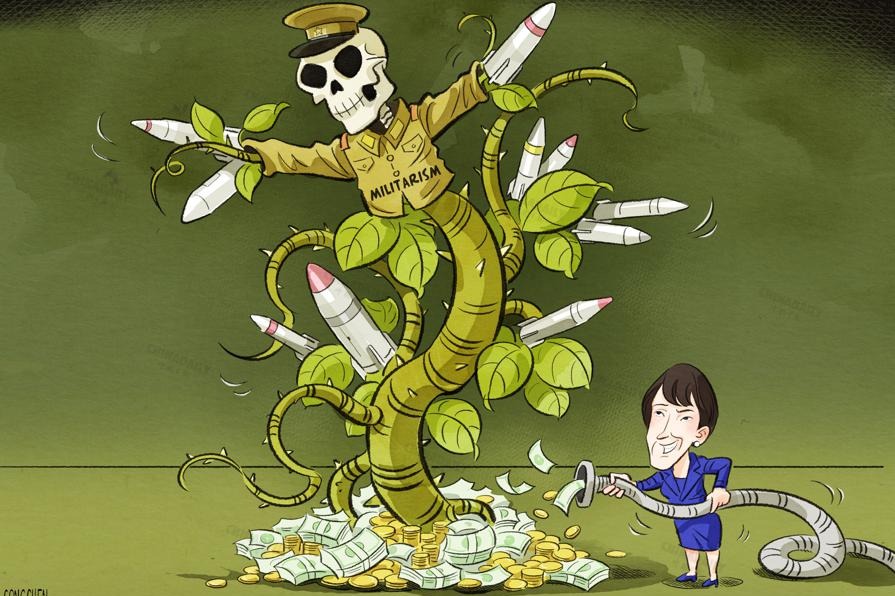China's International Development Cooperation in the New Era
China Daily | Updated: 2021-01-11 08:01
1. Enhancing Policy Coordination
Policy coordination is the foundation for Belt and Road participants to strengthen political mutual trust, develop pragmatic cooperation and integrate their interests. Based on the principle of seeking and expanding common ground while reserving and resolving differences, China has invited foreign officials to participate in training sessions, and dispatched experts and advisors to participating countries, to promote bilateral communication and understanding and create synergy for common development.
-Building platforms for the Belt and Road Initiative to dovetail with the development strategies of participating countries. China has held over 4,000 training sessions for officials from participating countries on Belt and Road topics such as infrastructure connectivity, industrial capacity, equipment standardization, trade facilitation, and technological standardization.
The training programs serve as a communication platform for coordinating policies among countries within the Belt and Road framework. Participants of the programs discussed and planned jointly on ways to link the Belt and Road Initiative with regional and national initiatives, such as Agenda 2063 of the African Union, the Master Plan on ASEAN Connectivity 2025, EU's Europe-Asia connectivity strategy, Pakistan's vision of a new Pakistan, Laos' initiative to transform from a landlocked country to a land-linked country, the Philippines' massive infrastructure projects under its Build, Build, Build program, Kazakhstan's Bright Road initiative, and Mongolia's Development Road program.
-Creating opportunities for regional economic and trade integration. China has sent experts and advisors abroad to offer technical consulting services, and propose feasible plans for development based on an in-depth understanding of the national conditions, policies and laws of each partner country, laying the groundwork for effective cooperation.
The China-Belarus Great Stone Industrial Park, an overseas economic and trade cooperation zone, has been hailed as "a pearl on the Silk Road Economic Belt". China implemented technical support programs for the industrial park, shared its experience in managing development zones, and invited experts from Belarus to visit the Tianjin Economic-Technological Development Area and the Suzhou Industrial Park. Through field trips and in-depth communication, the experts of the two countries jointly formulated policies on the management, operation, investment promotion, and industrial development for the park, laying solid foundations for its long-term development.
2. Strengthening Infrastructure Connectivity
Infrastructure connectivity is key to Belt and Road cooperation. China provides full support to participating countries in building trunk lines including highways, railways, ports, bridges and telecommunications cable networks, in order to build a connectivity framework consisting of six corridors, six routes, and multiple countries and ports.
-Connecting the six corridors and six routes. China supports Belt and Road participants in infrastructure connectivity projects to revive the ancient Silk Road. To support the China-Pakistan Economic Corridor and promote overland trade between the two countries, China participated in the upgrading and expansion of the Peshawar-Karachi Motorway and the Karakoram Highway. To support the China-Indochina Peninsula Economic Corridor and the Bangladesh-China-India-Myanmar Economic Corridor, China is helping to build infrastructure such as highways, bridges and tunnels in Bangladesh, Myanmar, Laos and Cambodia, promoting connectivity and integrated development between Southeast Asia and South Asia.
China's help with the construction of sections of Kyrgyzstan's North-South highway and Tajikistan's road renovation project on the China-Central Asia-West Asia Economic Corridor has improved the local transport conditions. Connecting over 100 cities across more than 20 countries in Europe and Asia, the China Railway Express to Europe has made an outstanding contribution to stabilizing international industrial and supply chains during the Covid-19 pandemic.
-Building logistics corridor on the 21st Century Maritime Silk Road. China supports the construction of a smooth and efficient transport corridor on the Maritime Silk Road with the key ports as major links. With China's assistance, the Friendship Port expansion project in Mauritania has significantly improved the handling capacity and alleviated cargo congestion and delays in the port, making it an important trade logistics node along the Maritime Silk Road.
-Building air transport hubs. To meet the increasing needs of air transport, China has assisted Pakistan, Nepal, Maldives, Cambodia, Zambia, Zimbabwe and Togo in upgrading and expanding their airports, thereby improving operational capacity and safety, increasing the passenger and cargo throughput, promoting local tourism, facilitating cross-border passenger and trade flow, and bringing more opportunities for their integration with the Belt and Road Initiative.
3. Promoting Unimpeded Trade
Trade is an important engine for economic growth. China has aided countries to improve their trade infrastructure and capacity, laying a solid foundation for Belt and Road participants to achieve unimpeded trade.
-Facilitating trade. To enhance the competitiveness of developing countries in the global supply chain, China has taken proactive measures to help Belt and Road partners improve their trade infrastructure and modernize their trading systems.
To speed up the customs clearance process for goods and combat smuggling, China has donated container inspection equipment to more than 20 countries including Georgia, Armenia, Tanzania, Kenya and the Philippines. China has also assisted Bangladesh's purchase of shipping vessels, delivering three oil tankers and three bulk carriers to the Bangladesh Shipping Corporation and thus helping to increase its overall transport capacity.
-Improving trade capacity. China is helping Laos to build its rural e-commerce policies, plans and systems, and helping Myanmar and Cambodia to build their systems for the inspection of agricultural products, inspection and quarantine of animals and plants, and grain storage, to enhance their export competitiveness.
From 2013 to 2018, to coordinate trade policies of different countries and build a free trade network, China held over 300 trade-related training sessions for participating countries on trade facilitation, international logistics, multimodal transport, e-commerce, border health and quarantine, border inspection and quarantine of animals and plants, and safety of imported and exported food. It has set up funds in the World Trade Organization and the World Customs Organization for building trade capacity and helping developing economies and particularly the least developed countries to integrate into the multilateral trading system.
























